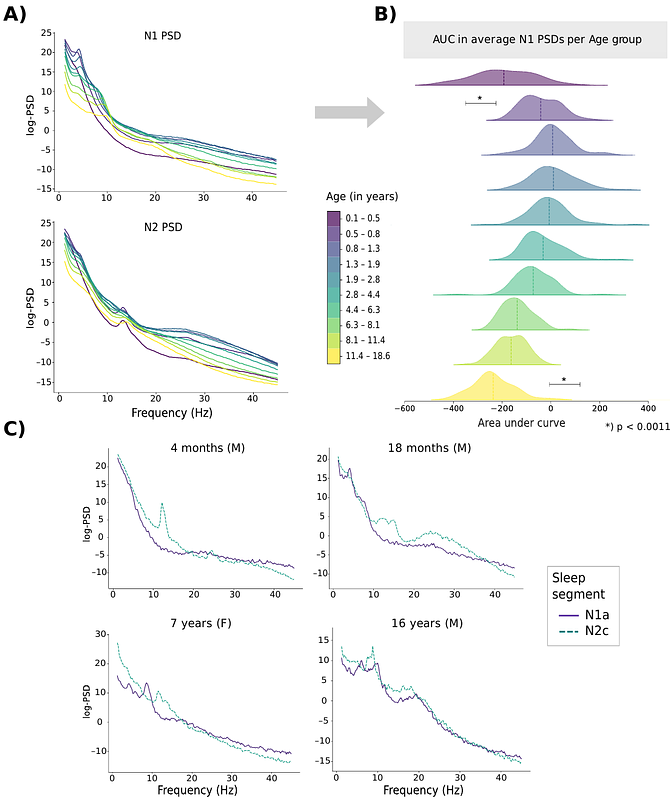Capturing individual variation in children's oscillatory brain activity during nREM sleep

Capturing individual variation in children's oscillatory brain activity during nREM sleep
Heikkinen, V.; Merz, S.; Salmelin, R.; Vanhatalo, S.; Lauronen, L.; Liljestrom, M.; Renvall, H.
AbstractHuman brain dynamics are highly unique between individuals: functional neuroimaging studies have recently described functional features that can be used as neural fingerprints. As such studies have generally been performed on adults, it is unclear if the results are applicable during brain development. Here we applied Bayesian reduced-rank regression (BRRR), to extract low-dimensional representations of electroencephalography (EEG) power spectra measured from normally developing children at different ages. The clinical EEG recordings represented different sleep stages in a pediatric population (N=782) of ages varying from 6 weeks to 19 years. The representations learned within specific sleep stages successfully separated between the subjects. Furthermore, a model trained with data across sleep stages generalized to unseen data, suggesting that informative neural fingerprints could be extracted. Fingerprint stability increased with the age of the subjects. In comparison to correlation-based measures in differentiating individuals from each other, the BRRR model performed better, highlighting the usefulness of the dimensionality reduction for data obtained in demanding clinical settings. While further studies are needed to address the possible non-linear maturation effects over developmental periods, our results demonstrate, for the first time, the existence of stable within-session neurofunctional fingerprints in pediatric populations.